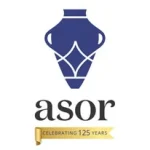
DEFINITION OF “INITIAL PUBLICATION OR ANNOUNCEMENT”
I. The Starting Point
According to the ASOR Policy on Professional Conduct, Section III.E.4, the publications and presentation venues of ASOR shall not serve as the initial place of publication or announcement of any object acquired by an individual or institution after April 24, 1972, (1) which is the date of entry into force of the 1970 UNESCO Convention on the Means of Prohibiting and Preventing the Illicit Import, Export and Transfer of Ownership of Cultural Property, with the following exceptions:
- a. the object was documented as already being in a collection before April 24,1972; and further, if that object is no longer in its country of origin, it must have been legally exported;
- b. the object was acquired after April 24, 1972 but it is considered to be a forgery and is published as a forgery;
- c. the object’s publication or announcement serves primarily to emphasize the degradation of archaeological heritage.
II. The Problem
Not defined here is what counts as an initial place of publication or announcement of such an object, and therefore it is unclear what sort of prior publication or announcement would need to have been made before an object could subsequently be presented at an ASOR meeting or published in an ASOR journal or monograph.
III. A Definition
Vehicle/Venue: Any one of the elements below constitutes a vehicle or venue for an “initial publication or announcement”:
- A peer-reviewed or similarly vetted publication in a scholarly book or journal, whether in print or online, that conforms to the specifications detailed under “Form” below.
- A peer-reviewed or similarly vetted presentation at a meeting of a learned society, whether in a paper or on a poster, that conforms to the specifications detailed under “Form” below.
- Publication in a scholarly catalog, whether in print or online, that conforms to the specifications detailed under “Form” below. “Scholarly catalogue” in this context refers to a catalog produced by an academically affiliated or educationally oriented organization (e.g., a museum catalog), and not catalogs produced by for profit and/or commercial organizations (e.g., an auction house catalog). Moreover, for a museum’s catalog to be considered a scholarly catalog, the museum would need to adhere to acquisition practices consistent with those stated in the ASOR Policy on Professional Conduct.
Form: Within the vehicles above, initial publication or announcement must include (1) an illustration (e.g., a photograph, a drawing, or similar graphic), (2) along with a commentary specific to the object (such as dimensions and a description, including, as applicable, details of ware and decoration and details regarding production technology). Initial publication or announcement of epigraphic material should also include (3) a transcription, and (4) if appropriate, a translation. Initial publication or announcement does not attach if an object is only referenced generally, for example, by its purchase, owner, or as part of an unspecified cache (e.g., “X purchased a hoard of 100 artifacts/coins/ostraca/papyri, etc.”).
Citation: In order to ensure that any object acquired by an individual or institution through purchase or donation after April 24, 1972, has been previously published or announced, the place of initial publication or announcement should be cited in the abstract submitted for a paper or poster to be presented in the Annual Meeting or in a footnote following the first mention of said object in an article or monograph submitted for publication in an ASOR journal or monograph series.
IV. Oversight
Decisions regarding the application of this policy reside with the Annual Meeting Section Chairs and, finally, with the Programs Committee (for papers or posters proposed for presentation at the ASOR Annual Meeting); with the editorial boards of BASOR, JCS, NEA, AASOR, and ARS and, finally, with the Publications Committee (for articles and monographs submitted for publication in ASOR publications); and with the Honors and Awards Committee (for books submitted for the various ASOR book awards).
(1) Which is to say: any object acquired by an individual or institution through purchase or donation after April 24, 1972; this policy does not refer to legally excavated objects that are among, say, materials added to the collection of a museum within the objects’ country of origin after April 24, 1972, nor does it refer to illegally exported objects that are returned to the objects’ country of origin after April 24, 1972.

